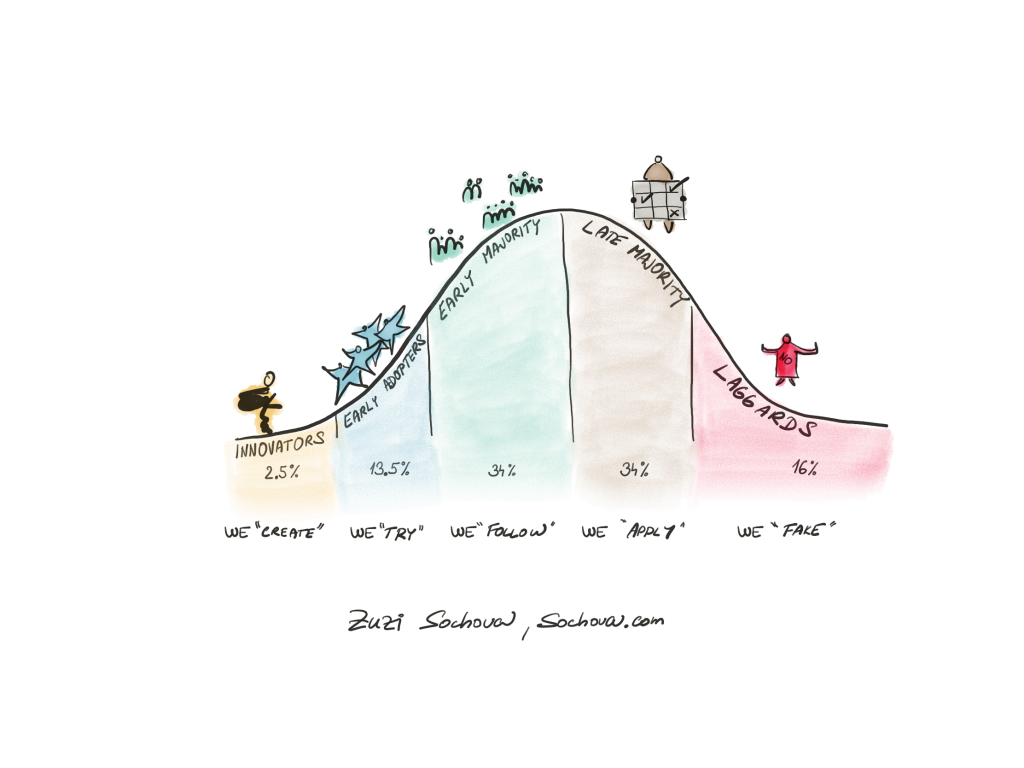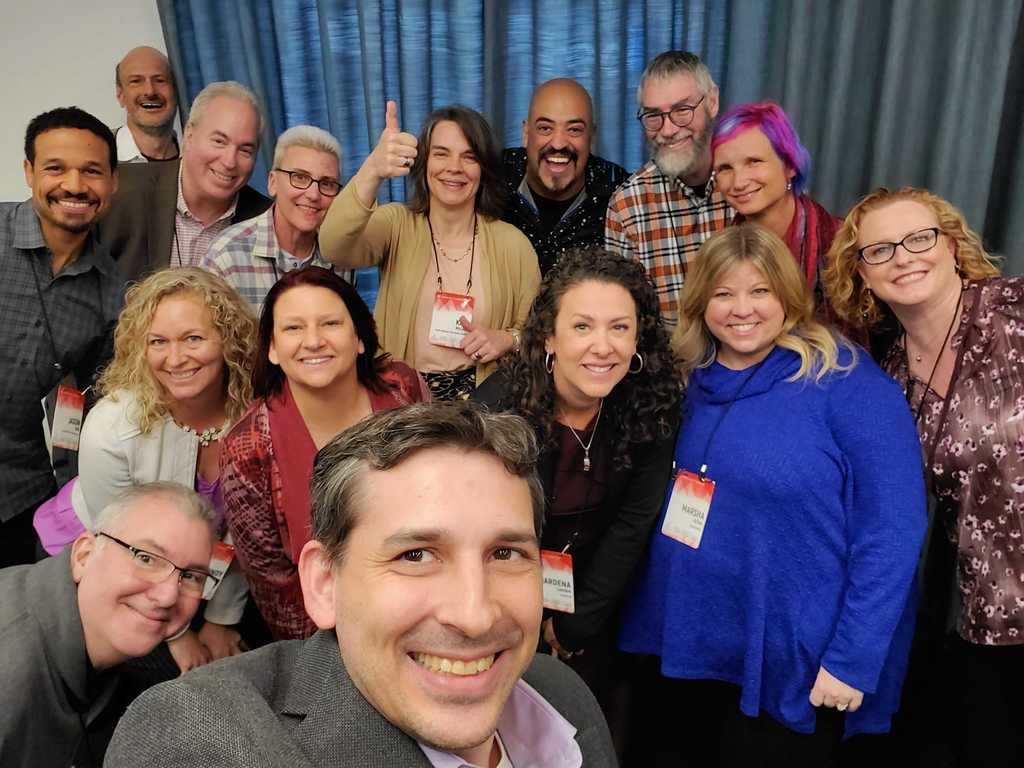Very often, people are expecting changes to happen instantly. They are impatient, they want everything now. But changes take time and effort. Change is definitely not a straightforward activity; it never goes as you plan it. In order to succeed with change in your organization, you need to be creative, innovative, and playful. And on top of that, you need to be patient. One of the reasons why I like Scrum, is because it’s incremental and iterative not only in delivering the value to the customers, but also in its own implementation. Step-by-step, you are figuring out what does it mean to be agile for us, how to use Scrum, and how shall we implement the different artifacts and events. There is no cookbook, you need to figure out your own way.
At the beginning, don’t look for any perfection, just start with anything that is good enough. You need to have a team that can deliver at least some sort of limited value. A team that has a chance to become at least a bit cross-functional. A team that over the time can take over the responsibility and ownership and become self-managing. Once you have this starting point, a team willing to give it a shot, all you need is to incrementally inspect and adapt. Small, little iterations. Every iteration, you discover what is working and make it stick; each iteration reveals what needs to be improved and comes up with an actionable step for the next sprint to improve it. It doesn’t have to be a big change, quite the opposite. Small steps work generally much better. This way, they’re safe to try and more likely to happen. They don’t look like they can change the world instantly, but if you look back where you’ve been six months ago, you realize you’ve made a huge step.
Overall, I would say, if you don’t take anything out of the Scrum framework but Retrospectives, do them regularly and make sure they bring incremental changes, you end up at a much better stage than you’ve been before. Being agile is about being adaptive. Be creative and take it one step at a time. Play with the change. An incremental change is the key practice that can make you truly Agile. It’s not about tools. It’s a different way of thinking, and incremental changes are a key part of that new way of thinking and approaching things.





 Good video conferencing is important. I’m using Zoom and I try to see the gallery view most of the time. It’s not like face to face, but it’s not bad either.
Good video conferencing is important. I’m using Zoom and I try to see the gallery view most of the time. It’s not like face to face, but it’s not bad either.


